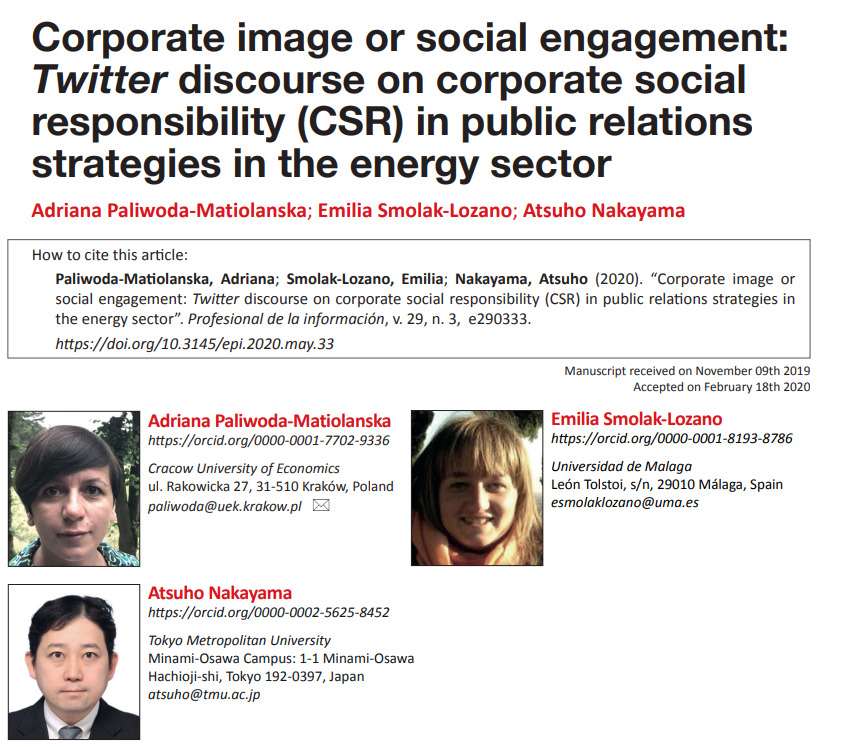
Corporate image or social engagement: Twitter discourse on corporate social responsibility (CSR) in public relations strategies in the energy sector
On Sale
€10.00
€10.00
Abstract: Social media have opened up new opportunities for the creation of innovative public relations strategies focused on establishing and cultivating relationships with stakeholders on the basis of meaningful dialogue. Consideration of the interrelation between corporate social responsibility (CSR) and public relations highlights new areas for exploration and engagement. Both the dialogical and semantic perspectives reveal the performative and conversational aspects of social media. In general, both the linguistic panorama of CSR and digital media as part of a PR strategy open new possibilities for a dialogical, interactive, meaningful relationship strategy for corporate image management. Based on the linguistic approach to CSR and the Communication Management Approach, this paper explores the linguistic use of Twitter as a primary dialogical strategy to effectively enhance interactive dialogue-based relationships with the stakeholders of the top 50 companies in the energy sector based on tweet data from 2016. Semantic analysis was conducted by advanced text mining and clustering techniques on 3042 tweets monitored in 2017 that contained the leading CSR-related hashtags and keywords. The results demonstrated that the top energy companies apply a defensive and symbolic perspective, mainly for branding purposes. The corporate discourse dominates over a meaningful conversational strategy to foster interaction with stakeholders around sustainability issues on Twitter. The study reveals a homogenized interrelation between CSR, social media, and public relations. The results reveal a tendency for isomorphy in the communication models applied by the companies in the energy sector. Furthermore, similarities in semantics and thus strong tendencies to mutually mimic dialogical strategies are also observed. The semantic narrative built around the brand indicates a limited orientation towards CSR and sustainability. As such, it does not contribute to the creation of a dialogical interaction and meaningful relationships with multiple stakeholders on Twitter, in the high-risk sector represented by the energy industry.
